Get the complete WAEC Chemistry Practical Answers for 20th May 2025 on this page. All observations, inferences, and accurate calculations will be provided before the exam. Keep refreshing the page for real-time updates.
WAEC Chemistry Practical 2025
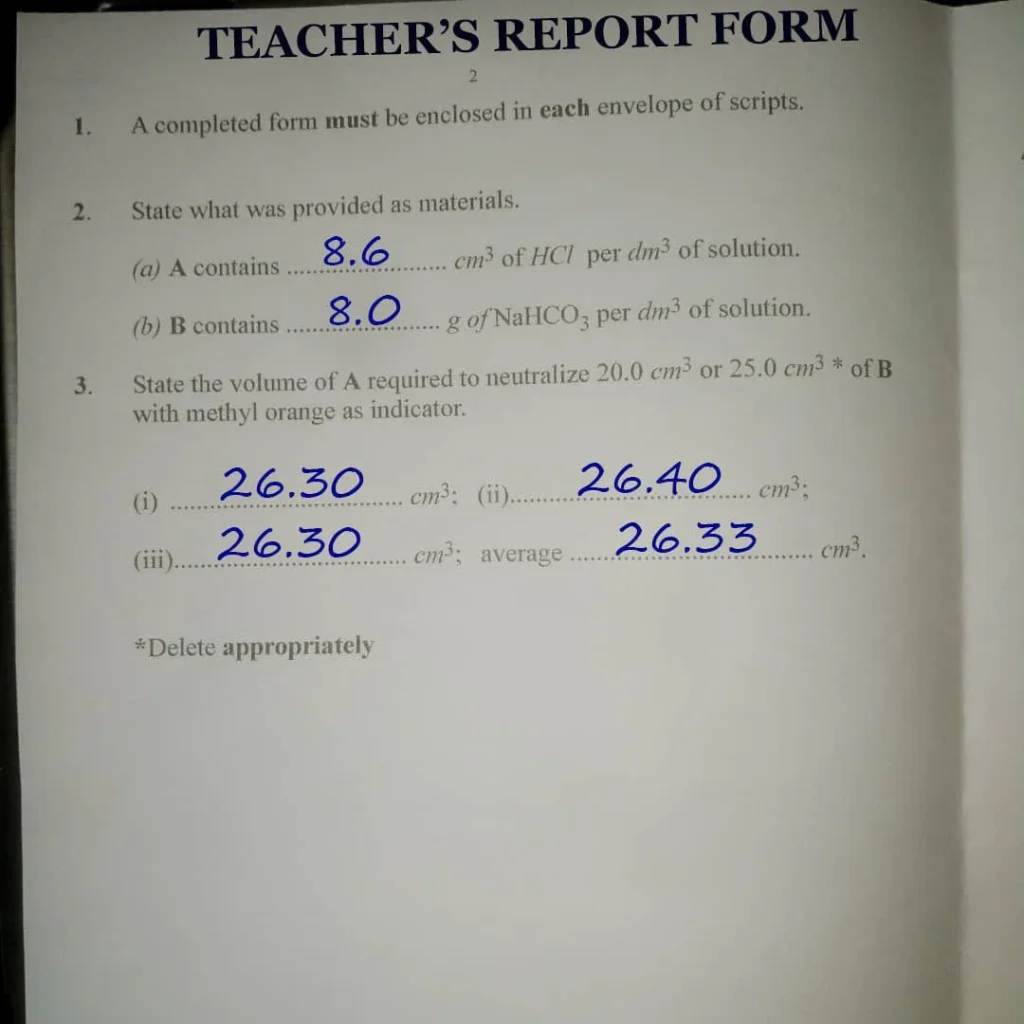
Number 1
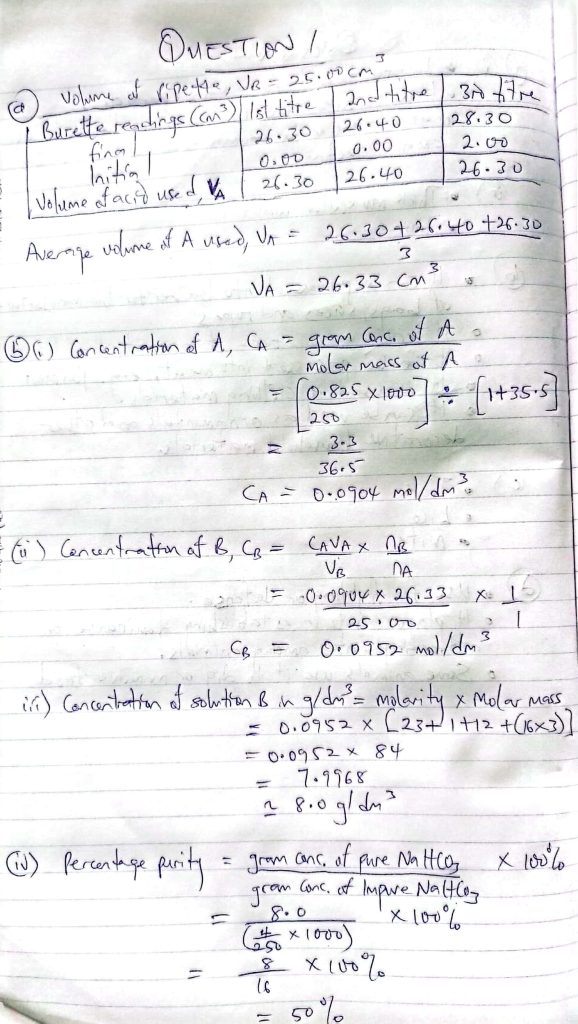
==================
Number 2
(2a)
Procedure:
Add all of C into a beaker with 10cm³ of distilled water and stir. Test the resulting solution with both red and blue litmus papers.
Observation:
Blue litmus paper turns red, red litmus paper remains unchanged.
Inference:
The solution is acidic.
(2bi)
First portion: Add NaOH(aq) in drops, then in excess
Observation:
A white gelatinous precipitate forms on addition of NaOH, which dissolves in excess NaOH.
Inference:
Presence of aluminium ions (Al³⁺).
(2bii)
Second portion: Add NH₃(aq) in drops, then in excess
Observation:
A white gelatinous precipitate forms, which is insoluble in excess ammonia.
Inference:
Confirms Al³⁺ ion, since Al(OH)₃ does not dissolve in excess NH₃.
(2biii)
Third portion: Add BaCl₂(aq), followed by dilute HCl
Observation:
A white precipitate forms with BaCl₂, which is insoluble in dilute HCl.
Inference:
Indicates the presence of sulfate ions (SO₄²⁻).
(2biv)
Fourth portion: Add Fehling’s solution A and B and boil.
Observation:
No red precipitate forms.
Inference:
No reducing sugar present.
Conclusion:
From all tests, the two substances present in mixture C are:
(i) Aluminium salt (e.g. aluminium sulfate Al₂(SO₄)3) gives Al³⁺ and SO₄²⁻
(ii) No reducing sugar or organic acid detected
OR
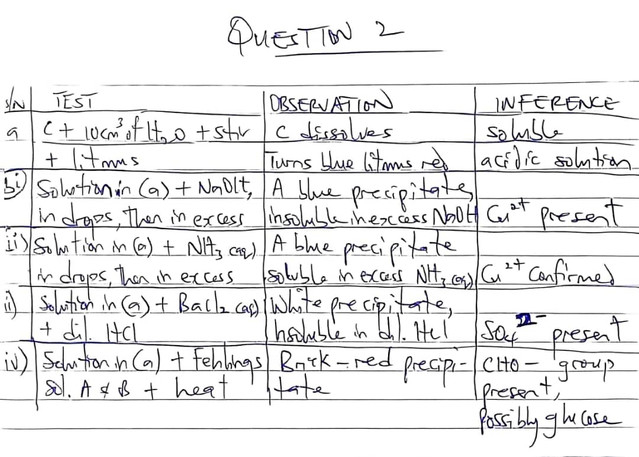
==================
Number 3
(3a)
Ammonia (NH₃)
(3b)
White smoke with HCl
(3c)
(NH₄)₂SO₄
(3d)
Ammonium sulfate
==================
COMPLETED!!!
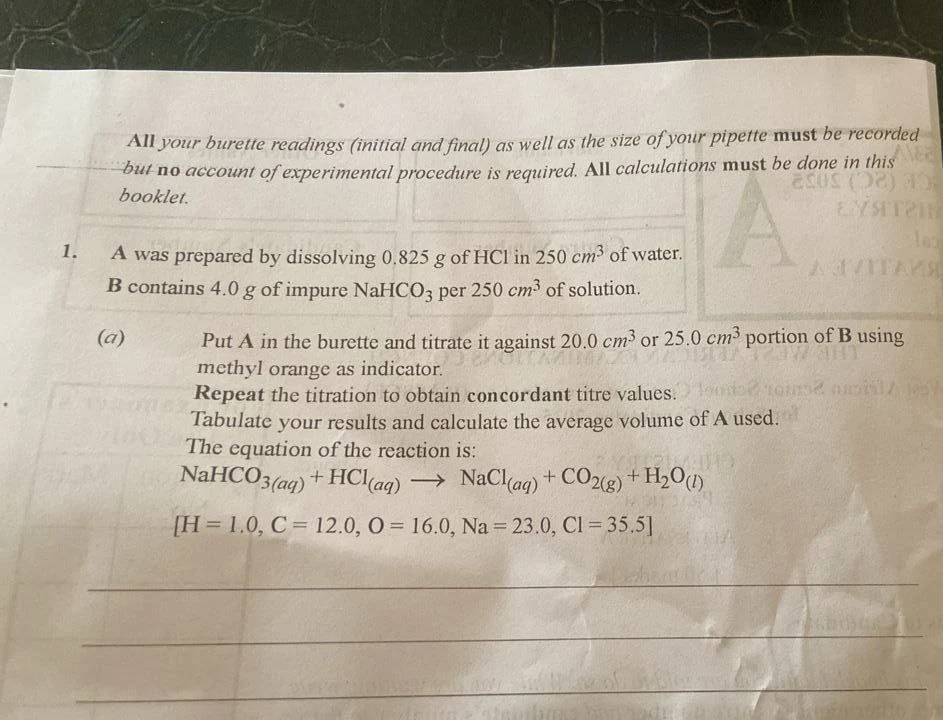
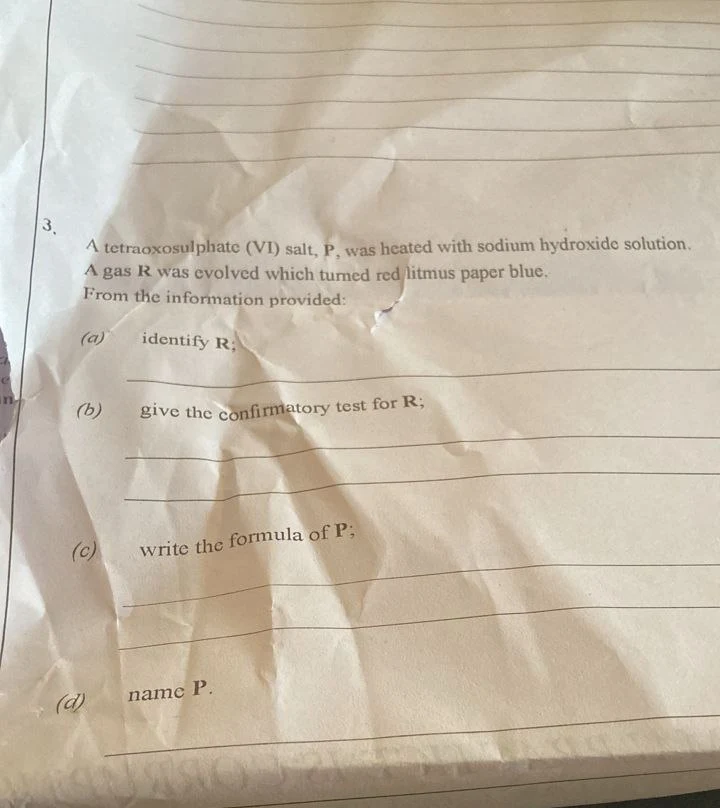
CHEMISTRY PRACTICAL SPECIMEN
(1) Great care should be taken to ensure that the information given in items 2 and 3 below does not reach the candidates either directly or indirectly before the examination.
(2) In addition to the fittings and reagents normally contained in a Chemistry laboratory, the following apparatus and materials will be required by each candidate:
(a) one burette of 50.0 cm³ capacity;
(b) one pipette, either 20.0 cm³ or 25.0 cm³. (All candidates at one centre must use pipettes of the same volume. These should be clean and free from grease);
(c) the usual apparatus for titration;
(d) the usual apparatus and reagents for qualitative work including the following with all reagents appropriately labelled:
(i) dilute sodium hydroxide solution
(ii) dilute hydrochloric acid
(iii) dilute trioxonitrate (V) acid
(iv) silver trioxonitrate (V) solution
(v) aqueous barium chloride
(vi) aqueous ammonia
(vii) lime water
(viii) red and blue litmus papers
(ix) dilute tetraoxosulphate (VI) acid
(x) Fehlings solution A & B
(e) spatula
(f) filtration apparatus;
(g) one beaker:
(h) one boiling tube;
(i) four test tubes:
(j) methyl orange indicator;
(k) glass rod;
(l) wash bottle containing distilled/deionized water:
(m) burning splint:
(n) watch glass:
(o) bunsen burner/source of heat;
(p) droppers
(q) mathematical table/calculator;
(r) phenolphthalein indicator.
(3) Each candidate should be supplied with the following, where n is the candidate’s serial number.
(a) 150 cm³ of a solution of HCl, in a corked flask or bottle, labelled An’. These should all be the same containing 8.6 cm³ of concentrated HCI per dm³ of solution.
(b) 150 cm³ of NaHCO, solution in a corked flask or bottle labelled ’Bn’. These should all be the same containing 8.0 g of NaHCO3 per dm³ of solution.
(c) One spatulaful of 1:1 uniform mixture of copper (II) tetraoxosulphate (VI) and glucose in a specimen bottle labelled ’Cn’. This must be the same for all candidates
